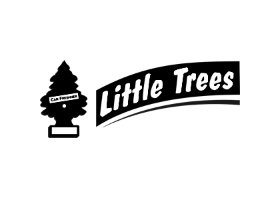Who Was Harriet Tubman?
Now:
AED 42.00 Inclusive of VAT
 Free Delivery
Free Delivery
Get it by 14 - 19 March

Earn 5% cashback with the Mashreq noon Credit Card. Apply now




1
Free delivery on Lockers & Pickup Points
Learn more
Enjoy hassle free returns with this offer.
Specifications
| Publisher | Penguin Workshop |
| ISBN 13 | 9780593097229 |
| ISBN 10 | 059309722X |
| Author | Yona Zeldis McDonough |
| Book Format | Paperback |
| Language | English |
| Book Description | Born a slave in Maryland, Harriet Tubman knew first-hand what it meant to be someone's property; she was whipped by owners and almost killed by an overseer. It was from other field hands that she first heard about the Underground Railroad which she t |
| About the Author | Yona Zeldis McDonough is a longtime doll lover and collector. She is also an award-winning author who has published numerous books for children and adults. She presently lives in Brooklyn with her husband and two children. Excerpt. © Reprinted by permission. All rights reserved. Who Was Harriet Tubman? No one knows the exact year in which Harriet Tubman was born. It may have been 1820 or 1821. Most people didn’t think the birth of an enslaved person was worth remembering. Harriet Tubman would grow into a brave and daring young woman. She was brave enough to escape from slavery. She was daring enough to help others escape, too. Because she led so many to freedom, she was called “Moses.” Like Moses in the Bible, Harriet Tubman believed that her people should be free. And she risked her life many times to help them become free. Even after she had escaped safely from the South, she went back to take other slaves north to freedom. Here is her story. Chapter 1: Life in Maryland Sometime around 1820 in Maryland, an enslaved woman named Harriet Ross gave birth to a baby girl. Neither Harriet, who was called Old Rit, nor her husband, Ben, could read or write, so they couldn’t record the year of the baby’s birth. No one else thought it was worth doing. But Old Rit loved her tiny child and wanted to protect her. She hoped her little girl, whose nickname was Minty, would learn to sew, cook, or weave. Then she could avoid the backbreaking work picking crops like tobacco, corn, or wheat in the fields. Old Rit and Ben had been born into slavery. They had many children, all of whom were also enslaved. Ever since 1619, when black people from Africa were kidnapped and brought on slave ships to Virginia, slavery had been a part of American life. By the early 1800s, most of the Northern states had stopped slavery. But the Southern states had not. Enslaved people like Ben and Old Rit worked very hard, yet they were not paid for their work. Instead, Ben and Old Rit lived on land owned by their enslaver, a man named Mr. Brodas. This land and the many buildings on it was called a plantation. Mr. Brodas’s plantation house was large and grand, like so many of those in the South. Ben and Old Rit could see the Brodases’ big house every day, but they didn’t live there. They lived in a log cabin, like the other enslaved people on the plantation. These cabins were very small. They had no windows. The floors were made of dirt. Piles of worn-out blankets were the only beds. Still, for little Minty, this was home. As soon as she could walk, Minty joined her brothers and sisters and other enslaved children who were watched by an older slave. The littlest children weren’t forced to work―yet. There were even times when Minty and the other children could play and have fun. Summers were warm and bright. They swam and fished in the many streams and creeks. Unlike many enslaved children, Minty lived with her loving parents. Her father told her stories about the woods. He could name the birds. He knew which berries were sweet and tasty. Minty’s mother told her stories from the Bible. From her mother, Minty learned about Moses. Moses had lived thousands of years before. He led his people, the Hebrews, out of Egypt, where they had been slaves, and into freedom. Around 1826, when Minty turned six, her life changed. Mr. Brodas hired her out. This meant that she had to leave her parents and her home. She had to go live and work for white people who could not afford to buy a slave of their own. The day she had to leave, a wagon came to take her away. Minty did not want to go. Her two older sisters had been sent away. She remembered how they cried and cried. But they had to go anyway. So did Minty. Minty worked for a woman named Mrs. Cook. Mrs. Cook was a weaver. She spent her days in front of a big, noisy loom. Minty helped her wind the yarn. The air was filled with fuzz and lint. It made Minty cough. |
| Publication Date | 3 September 2019 |
| Number of Pages | 112 pages |
Who Was Harriet Tubman?
Added to cart
Cart Total AED 42.00




























































































































